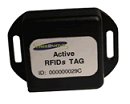 An Introduction to RFID Tags
An Introduction to RFID Tags
Radio frequency identification (RFID) is a technology that uses radio waves to identify objects, RFID Tags such as goods in supply chains. Attached to an object is an RFID “tag”, made of an integrated circuit and an antenna, that sends the object’s identification information to a wireless receiver, called a “reader.”
Readers convert the object identification information into digital data. In a supply chain application, these data are sent to a company’s operations and accounting systems and sometimes to trading partners.
These tags can be attached to or incorporated into a product, animal, or person for the purpose of identification using radio waves. Chip-based RFID tags contain silicon chips and antennas. Passive tags require no internal power source, whereas active tags require a power source.
The potential of using these tags to track goods is enormous and it is already visible. Most people have probably already used RFID tags but not realised it. For example, anyone who has used an Oyster card to travel on public transport in London has well and truly joined the RFID revolution. Anyone who has an immobiliser for their car carries an RFID tag with them all the time.
Tracking Goods Using these Tags
Unlike bar codes, which must be scanned individually and usually manually, multiple radio frequency identification tags can be read simultaneously by a reader, which needs no operator. And an RFID tag accommodates a serial number, enabling identification of a unique object—whereas bar codes are limited to identifying the “class” of an object (such as the stock-keeping unit, or SKU).
With the ability to capture more accurate and precise data automatically, and share it with supply chain partners, companies can fine-tune their supply chains to optimise sales while reducing Costs.
Thanks the techstore team
